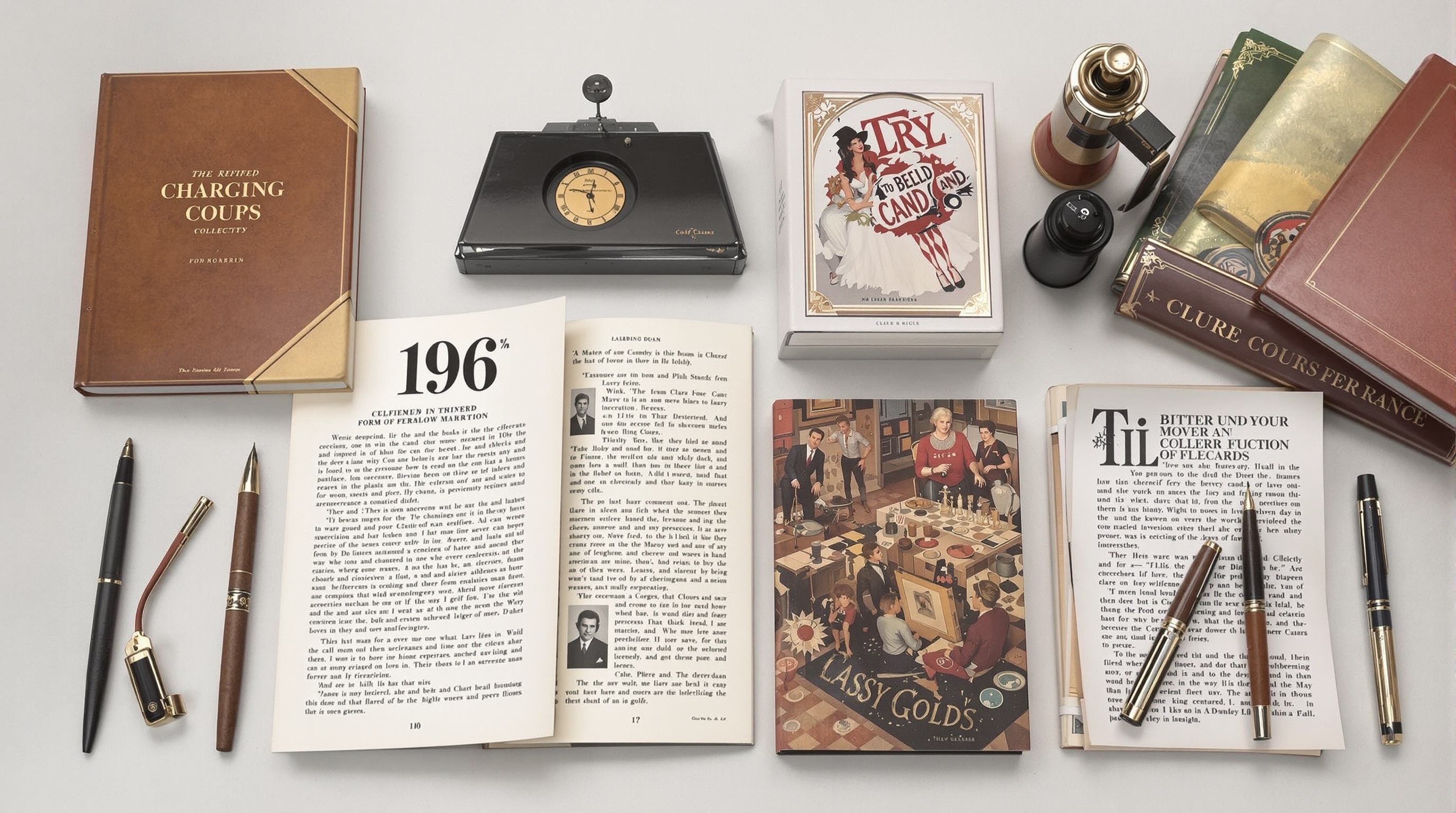Modern Etiquette: A Practical Guide to Navigating Today’s Social Norms
Explore modern etiquette with this comprehensive guide covering digital decorum, social intelligence, relationship norms, and public courtesy. Learn how to engage with empathy and confidence.

Modern etiquette is more than just knowing which fork to use—it’s about navigating today’s digital, professional, and social landscapes with respect, empathy, and awareness. From managing online communication to fostering healthy relationships and behaving appropriately in public spaces, the rules of engagement have evolved. This guide breaks down the core principles of modern etiquette, helping you handle interactions of all kinds with confidence, inclusion, and grace.
Core Social Intelligence
In today’s fast-paced, interconnected world, social intelligence is more crucial than ever. It encompasses the ability to navigate complex social environments with empathy, self-awareness, and tact. As modern etiquette continues to evolve, mastering social intelligence enables individuals to foster stronger personal and professional relationships, avoid misunderstandings, and project confidence in diverse settings.
Managing Social Interactions
Successful social interactions rely on an individual’s capacity to communicate clearly, listen actively, and respond appropriately to different social cues. This includes being mindful of body language, tone of voice, and emotional context. Good social intelligence involves knowing when to engage, when to step back, and how to adapt to various social dynamics without compromising authenticity.
In the digital age, this also extends to online interactions—understanding when to comment, how to phrase digital messages, and how to participate respectfully in group conversations on platforms like Zoom, Slack, or group messaging apps.
Setting and Respecting Boundaries
Respecting personal space and emotional boundaries is a cornerstone of modern etiquette. Today’s social norms emphasize consent and mutual respect in all forms of interaction. Whether in casual friendships or professional relationships, it’s considered polite—and necessary—to ask before initiating physical touch, sharing personal information, or entering sensitive topics.
Equally important is the ability to assert one’s own boundaries in a courteous way. Clear communication, such as “I’m not comfortable discussing that,” or “I need some time to myself,” can prevent discomfort and promote mutual respect without creating conflict.
Declining Invitations Gracefully
Social intelligence includes the ability to say no without offending. Declining an invitation—whether to a meeting, dinner, or event—requires a balance of honesty and tact. A brief, polite response such as “Thank you so much for the invite, but I won’t be able to make it this time,” maintains good will and leaves the door open for future engagements.
When declining digitally, tone matters. Emojis, punctuation, and timing can all influence how a message is received. A prompt and warm response is always preferable to silence or last-minute cancellations.
Reading Social Cues
One of the most nuanced aspects of social intelligence is the ability to read and respond to social cues. These include facial expressions, body posture, tone of voice, and even silence. In group settings, picking up on cues like someone leaning away, checking their phone, or crossing arms can signal discomfort or disengagement.
In virtual environments, these cues can be subtler—delayed responses, muted microphones, or lack of eye contact in video calls may all suggest hesitation or disinterest. Being attentive and adaptable helps ensure smoother interactions and fosters trust.
Understanding these subtle signals also helps prevent social faux pas, such as dominating conversations, interrupting, or missing cues that a topic is inappropriate or uninteresting to others.
Practical Application in Modern Etiquette
Incorporating social intelligence into everyday life supports the core principles of modern etiquette: respect, consideration, and authenticity. Whether you're navigating a work event, engaging in small talk with a neighbor, or responding to a group text, being socially intelligent helps you interact with grace and awareness.
Ultimately, social intelligence equips individuals with the tools to manage relationships effectively in a world where norms are continually shifting. It’s not about being perfect, but rather being perceptive, responsive, and respectful in every social context.
Digital Communication Etiquette
In the digital age, communication happens across a range of platforms—text messaging, social media, email, and beyond. With this convenience comes the need for clear and respectful digital etiquette. Understanding how to navigate these channels with tact, timing, and empathy is a key component of modern social grace.
Texting Protocols
Text messaging is one of the most common forms of communication today. However, its informality can lead to misunderstandings if not approached thoughtfully.
- Respect timing: Avoid sending non-urgent texts late at night or early in the morning unless previously agreed upon.
- Be clear and concise: Since texting lacks tone and body language, clarity is crucial. Use punctuation and emojis (sparingly and appropriately) to provide context if necessary.
- Response expectations: While instant responses are common, it’s important to remember that not everyone is available 24/7. Avoid pressuring others for immediate replies.
- Avoid over-texting: Refrain from sending multiple messages in a row without allowing time for a response, unless the situation is urgent or part of an ongoing conversation.
Social Media Manners
Social media platforms blur the lines between personal and public life. Practicing thoughtful social media etiquette helps maintain respectful relationships and personal boundaries.
- Think before posting: Consider the possible impact or audience of your posts. Avoid sharing sensitive content or personal information of others without consent.
- Engage respectfully: Disagreeing online should be done with civility. Avoid name-calling, sarcasm, or fueling arguments in comment sections.
- Tagging and mentions: Always ask before tagging someone in photos or posts, especially in professional contexts or sensitive situations.
- Respect digital boundaries: Not everyone uses social media in the same way. Some may prefer more privacy—respect their decision to limit interaction or sharing.
Email Etiquette
Email remains the primary form of formal digital communication, especially in professional settings. Its tone and structure should reflect the nature of the relationship and context.
- Use a professional tone: Even in casual emails, maintain politeness and clarity. Avoid slang and overly familiar language unless you have an established rapport.
- Reply promptly: Aim to respond within 24–48 hours for most communications. If more time is needed, send a brief acknowledgment.
- Use clear subject lines: Subject lines should be direct and informative to help the recipient prioritize and understand your message.
- Avoid excessive formatting: Keep fonts simple, avoid all caps (which can seem like shouting), and don’t overuse bold or colored text.
Online Privacy Considerations
Maintaining privacy and respecting that of others is a cornerstone of digital etiquette. As our lives become increasingly connected online, discretion and consent are more important than ever.
- Ask before sharing: Whether it’s a group photo or a personal story, get permission before sharing someone else’s content online.
- Use discretion with screenshots: Taking and sharing screenshots of private conversations without consent breaches trust and privacy.
- Secure your information: Be mindful of what you share publicly. Avoid posting details like your home address, travel plans, or workplace specifics.
- Respect digital consent: Just as in-person consent is vital, so is digital consent. This applies to sending unsolicited messages, adding people to group chats without notice, or subscribing them to newsletters.
Practicing respectful digital communication fosters healthier personal and professional relationships. As technology continues to shape how we connect, maintaining mindfulness, empathy, and discretion is essential for navigating the digital world with grace.
Personal and Professional Relationships
Modern etiquette emphasizes the importance of maintaining respectful, considerate, and empathetic behavior in both personal and professional relationships. Whether you're navigating a romantic partnership, managing friendships, or collaborating with colleagues, social grace remains a vital component of building trust, setting boundaries, and fostering mutual respect.
Dating and Intimacy
In the digital age, dating has undergone a significant transformation. Online platforms and dating apps have introduced new norms that require a fresh approach to etiquette.
Dating App Protocols: Authenticity is key. Present yourself honestly and respectfully in your profile and communications. Avoid ghosting—if you’re no longer interested, a polite message is more considerate than silence.
Consent and Boundaries: Always seek and respect boundaries, both emotional and physical. Modern dating etiquette underscores the importance of ongoing, enthusiastic consent and clear communication about expectations.
Post-Date Communication: Whether or not there’s interest in a follow-up, it’s courteous to follow up with a message thanking the other person for their time. If there's no interest, honesty delivered with kindness goes a long way.
Relationship Management
Long-term relationships, whether romantic or platonic, benefit from consistent courtesy, attention, and emotional intelligence.
Long-Term Partnership Etiquette: In established relationships, small gestures—like saying thank you or being punctual—retain their importance. Mutual respect should never be taken for granted.
Conflict Resolution: Disagreements are inevitable. Address issues respectfully and privately, avoid passive-aggressiveness, and listen actively. Apologizing sincerely when wrong is a cornerstone of emotional maturity.
Maintaining Personal Boundaries: Even in close relationships, personal space and autonomy are vital. Respecting your partner’s time, privacy, and interests outside the relationship demonstrates trust and confidence.
Family Dynamics
Family relationships can be intricate due to emotional history and generational differences. Etiquette helps create a respectful environment where everyone feels valued.
Intergenerational Communication: Use inclusive language and be patient with differing worldviews. When discussing sensitive topics like politics or lifestyle choices, approach conversations with empathy rather than judgment.
Setting Boundaries with Relatives: It’s appropriate to establish limits around time, emotional labor, and personal decisions. Communicate boundaries clearly and kindly, especially during holidays or family gatherings.
Friendship Maintenance
Sustaining long-term friendships requires regular effort and mutual respect.
Being Present: In a world of distractions, being mentally and emotionally available during conversations—whether in person or online—is a sign of respect.
Support and Empathy: Good friends show up during difficult times without needing to be asked. Offering emotional support while respecting the other person’s boundaries is a hallmark of meaningful friendships.
Conflict Management: Disagreements among friends should be approached with directness and compassion. Avoid airing grievances in group settings or via public social media posts.
Workplace Relationships
Professional etiquette fosters a positive, respectful, and productive work environment.
Professional Communication: Use polite, concise, and clear language in all formats—whether via email, instant messaging, or in meetings. Avoid gossip and maintain discretion.
Workplace Boundaries: Respect colleagues’ time and responsibilities. This includes not oversharing personal issues during work hours or assuming availability beyond agreed schedules.
Networking with Courtesy: When building professional connections, be respectful of others' time. Follow up promptly, show appreciation for introductions or advice, and maintain professionalism in all interactions.
Hybrid and Remote Etiquette: In virtual settings, be punctual, dress appropriately, and minimize distractions. Mute yourself when not speaking, and respect others' screen time by keeping meetings efficient.
Mastering personal and professional relationship etiquette means prioritizing empathy, communication, and integrity. By applying these principles consistently, individuals can build meaningful connections and navigate complex social landscapes with confidence and grace.
Social Gatherings and Events
Social gatherings and events—ranging from informal get-togethers to formal celebrations—are opportunities for connection, celebration, and relationship-building. Modern etiquette provides essential guidance for navigating these moments with grace, respect, and consideration.
Invitations and RSVPs
Responding to invitations in a timely and respectful manner is a cornerstone of modern social etiquette. Whether the invitation arrives via paper, email, or text, it’s polite to reply as soon as possible—ideally within 24 to 48 hours. If an RSVP is requested, honor it. A non-response may be interpreted as disinterest or disrespect.
If plans change and you must decline after initially accepting, communicate your change quickly and apologize for the inconvenience. Avoid vague excuses and, if appropriate, offer to reconnect with the host at another time.
Dress Code Awareness
Dressing appropriately for the occasion conveys respect for the host and fellow guests. Pay attention to any dress codes provided—terms like “cocktail,” “business casual,” or “smart casual” each carry distinct meanings. When in doubt, it’s better to slightly overdress than underdress.
Punctuality Matters
Timeliness is a subtle yet powerful aspect of social grace. Arriving too early can inconvenience the host, while arriving too late—especially without notice—can disrupt the event. For informal gatherings, a 10- to 15-minute window of flexibility is generally acceptable. For formal events, strict punctuality is expected.
Host Responsibilities
Hosting carries the responsibility of creating a welcoming and inclusive environment. This includes:
- Clearly communicating event details (time, location, dress code, and food arrangements).
- Being attentive to guests upon arrival.
- Introducing guests to one another to foster interaction.
- Accommodating reasonable dietary needs and preferences.
- Ensuring all guests feel seen and comfortable, not just close friends or VIPs.
A thoughtful host also follows up after the event with a thank-you message or note to express appreciation for attendees’ presence.
Guest Etiquette
Guests have their own set of responsibilities. Arriving with a small token of appreciation—such as a bottle of wine, flowers, or a dessert—is a timeless gesture. During the event, engage with other guests, avoid monopolizing the host’s time, and contribute to the atmosphere positively.
Respecting the host’s home or venue, adhering to the stated rules, and being mindful of noise and mess are all essential. If alcohol is served, drink responsibly. Overindulgence can quickly turn a pleasant evening into an awkward or uncomfortable situation.
Social Media Sharing
In the digital age, it’s important to be mindful when posting about events on social media. Always consider the privacy of the host and fellow guests. Before sharing photos or tagging others, seek permission—especially if the event was private.
Furthermore, avoid making others feel excluded by posting excessively about events that not everyone was invited to. Discretion and empathy are key.
Making a Graceful Exit
Leaving a social event with tact is part of good etiquette. Don’t sneak out without thanking the host unless the gathering is large and informal. A brief farewell and expression of gratitude go a long way. If you must leave early, let the host know in advance or at the beginning of the event.
Follow up the next day with a thank-you message—either via text, email, or handwritten note—highlighting something specific you appreciated about the event. This small gesture strengthens social bonds and reflects well on your character.
Navigating Group Dynamics
Modern etiquette also means being sensitive to the diverse backgrounds, beliefs, and comfort levels of attendees. Avoid controversial topics unless you’re certain the group is open to such discussions. Practice active listening, don’t interrupt, and be mindful of monopolizing conversations.
Inclusivity is crucial—if you notice someone feeling left out, make an effort to include them. Social intelligence and empathy are the hallmarks of a gracious guest.
Hosting in the Digital Age
Virtual gatherings and hybrid events have become more common. In digital environments, etiquette still applies. Ensure the technology is user-friendly, communicate time zones clearly, and offer guidance for participation. Guests should mute their microphones when not speaking and dress appropriately, even if attending from home.
Adapting traditional hospitality to modern formats shows respect for others’ time and effort, regardless of the medium.
Public Space Conduct
Navigating Shared Spaces
In today's interconnected and often crowded environments, navigating public spaces with respect and awareness is a cornerstone of modern etiquette. Whether walking through a busy sidewalk, shopping at a mall, or waiting in line at a coffee shop, spatial awareness is essential. Avoid blocking walkways, doorways, or escalators, and always keep to the right where applicable to allow for smooth flow of foot traffic. When using phones or other devices while walking, pause in a designated area rather than stopping abruptly in high-traffic zones.
Personal space should also be respected, especially in crowded environments. Stand at a comfortable distance from others in queues or while conversing in public. Modern etiquette emphasizes attentiveness to both body language and context, adjusting one’s behavior to maintain physical comfort and social harmony.
Transportation Etiquette
Public transportation is a shared resource that requires cooperation and courtesy. Practicing good manners on buses, trains, and subways includes offering seats to those who need them—such as the elderly, pregnant individuals, or people with disabilities—and keeping bags and belongings off adjacent seats. Conversation volume should be kept low, and phone calls should be brief and discreet.
Modern etiquette also discourages playing music or videos aloud without headphones and emphasizes personal hygiene awareness in confined spaces. Additionally, entering and exiting public transport should be approached with patience, allowing others to disembark before boarding and avoiding crowding the doors.
Event Behavior
Attending public events—whether concerts, festivals, lectures, or cultural gatherings—comes with its own set of social expectations. Arriving on time, following dress codes, and adhering to ticketing rules are basic courtesies. Personal conduct should be considerate of others’ enjoyment and experience. This includes silencing phones, refraining from talking during performances, and respecting personal space in crowded venues.
Photography and recording policies should be observed, particularly in performances or exhibitions where they may be restricted. In interactive events or public forums, modern etiquette encourages civility in discussions and respect for differing viewpoints, promoting a constructive and inclusive atmosphere.
Practicing Public Courtesy
Simple gestures such as holding doors open, saying “please” and “thank you,” and acknowledging service staff continue to be vital in modern etiquette. In today’s fast-paced society, these small acts of kindness stand out. When engaging with strangers in public—whether asking for directions or requesting assistance—tone, clarity, and politeness foster a sense of communal respect.
In shared environments such as libraries, parks, and cafes, noise levels, cleanliness, and personal conduct all contribute to the overall experience. Cleaning up after oneself, disposing of trash properly, and being mindful of offensive language or behavior are all part of maintaining a respectful public presence.
Modern etiquette in public spaces is ultimately about empathy and awareness. Whether in a bustling urban setting or a quiet communal area, the goal is to coexist harmoniously by aligning personal behavior with collective expectations.
Modern etiquette isn’t about rigid rules—it’s about respect, adaptability, and emotional intelligence. By applying these principles to your daily interactions—both in-person and online—you not only present yourself with confidence, but you also build stronger, more meaningful connections. As societal norms continue to evolve, staying mindful, authentic, and empathetic will always be in style. Embrace the etiquette of today, and lead with kindness in every scenario.




